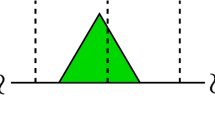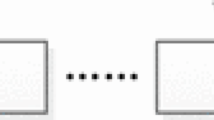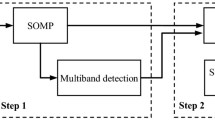Abstract
In the complex and changing radio environment, how to achieve the fast and accurate spectrum sensing over an ultra-wide bandwidth is a big challenge. A novel compressed sensing algorithm based on modulation classification and symbol rate recognition is proposed by using the minimal sampling rate to detect spectrum holes. It is more efficient than the Nyquist sampling rate and traditional compressed sampling rate, which requires the reconstruction of the original signal. Simulation results show that it can further decrease the compressed sampling rate depending on the relation between compression ratio with modulation scheme and symbol rate. Furthermore, in order to improve the accuracy of modulation classification and symbol rate recognition, a compressed sensing and wavelet transform (CS-WT) feature detector is proposed to perform wideband detection in low SNR condition. Simulation results show that CS-WT feature detector can effectively reduce the noise introduced by CS process. Given the false alarm of 0.05 and the detection probability of 0.9, the detection probability of proposed CS-WT feature detection algorithm can be improved 4 dB compared to traditional cyclostationary detection. Therefore, the overall sampling rate can be dramatically reduced without spectrum detection performance deterioration compared to the conventional static sampling algorithm.










Similar content being viewed by others
References
Federal Communications Commission. (2005). Notice of proposed rule making and order: Facilitating opportunities for flexible, efficient, and reliable spectrum use employing cognitive radio technologies. ETDocket No. 03–108.
Yucek, T., & Arslan, H. (2009). A survey of spectrum sensing algorithms for cognitive radio applications. IEEE Communications Surveys and Tutorials, 11(1), 116–130. First Quarter.
Zhao, Y. Q., Li, S. Y., Zhao, N., & Wu, Z. L. (2010). A novel energy detection algorithm for spectrum sensing in cognitive radio. Information Technology Journal, 9(8), 1659–1664.
Bhargavi, D., & Murthy, C. R. (2010). Performance comparison of energy, matched-filter and cyclostationarity-based spectrum sensing. Signal Processing Advances in Wireless Communications (SPAWC) 2010 IEEE Eleventh International Workshop, 1(5), 20–23.
Kyouwoong, K., Akbar, I.A., Bae, K.K., Um, J.S., Spooner, C.M., & Reed, J.H. (2007). Cyclostationary approaches to signal detection and classification in cognitive radio. New Frontiers in Dynamic Spectrum Access Networks (DySPAN). 2007 IEEE 2nd International Symposium, 212–215.
Adoum, B.A., & Jeoti, V. (2010). Cyclostationary feature based multiresolution spectrum sensing approach for DVB-T and wireless microphone signals. Computer and Communication Engineering (ICCCE), 2010 International Conference, 1–6.
Dandawate, A. V., & Giannakis, G. B. (1994). Statistical tests for presence of cyclostationarity. Signal Processing, IEEE Transactions, 42(9), 2355–2369.
Tian, Z., & Giannakis, G.B. (2007). Compressed sensing for wideband cognitive radios[C]. IEEE Acoustics, Speech and Signal Processing (ICASSP) 2007.
Mallat, S., & Hwang, W. L. (1992). Singularity detection and processing with wavelets. Information Theory, IEEE Transactions, 38(2), 617–643.
Tian, Z., Tafesse, Y., & Sadler, B. M. (2012). Cyclic feature detection with sub-nyquist sampling for wideband spectrum sensing. Selected Topics in Signal Processing, IEEE Journal, 6(1), 58–69.
Li, W. S., & Zhao, J. (2011). Application of wavelet transform in edge detection. Image and Signal Processing (CISP) 2011 4th International Congress, 4, 2173–2176.
Tropp, J. A., Laska, J. N., Duarte, M. F., Romberg, J. K., & Baraniuk, R. G. (2010). Beyond Nyquist: Efficient sampling of sparse bandlimited signals. Information Theory, IEEE Transactions, 56(1), 520–544.
Author information
Authors and Affiliations
Corresponding author
Rights and permissions
About this article
Cite this article
Zhang, Y., Fu, X., Zhang, Q. et al. Novel Compressed Sensing Algorithm Based on Modulation Classification and Symbol Rate Recognition. Wireless Pers Commun 80, 1717–1732 (2015). https://doi.org/10.1007/s11277-014-2109-0
Published:
Issue Date:
DOI: https://doi.org/10.1007/s11277-014-2109-0




